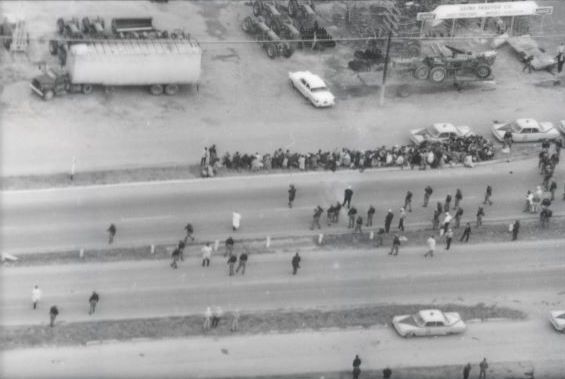Auburn University in Alabama recently released digitally enhanced photographs of the Bloody Sunday protest taken by the Federal Bureau of Investigation in Selma, Alabama, on March 7, 1965. On Bloody Sunday, a group of approximately 600 marchers were confronted by Alabama State Troopers armed with tear gas and metal batons as they began a march for equality toward Montgomery. Marchers were pummeled by law enforcement, images that were shown on national television news. The event would serve as a catalyst for Americans across the country to rally behind the civil rights movement.
Photographs taken by FBI photographers from the ground and in surveillance aircraft were declassified in 2015, but have never been enlarged and enhanced via hi-resolution scans until now. Thanks to a successful Freedom of Information Act request and a trip to the National Archives in Washington, D.C., a joint Auburn University-Georgia Institute of Technology research team has produced a collection of images that have never before been seen in such detail.

The newly enhanced FBI images provide extra detail about the roughly 300-yard area where the incident occurred. Thanks to the photos, researchers have been able to add elements to and streamline a detailed map they have created of the historic location, as well as identify the brave individuals who participated in the march that day.
“Being able to see these images in such detail has greatly impacted our research,” said Richard Burt, the McWhorter Endowed Chair and head of the McWhorter School of Building Science in the College of Architecture, Design and Construction at Auburn University. “Not only have we been able to confirm several of our contentions about what happened that day and specifics about the landscape of the area, but the photos have helped us enhance our map with greater clarity. This breakthrough was a team effort, and we look forward to sharing these images with the public and former marchers for the first time.”
A major question is why these photographs remained classified for 50 years.











